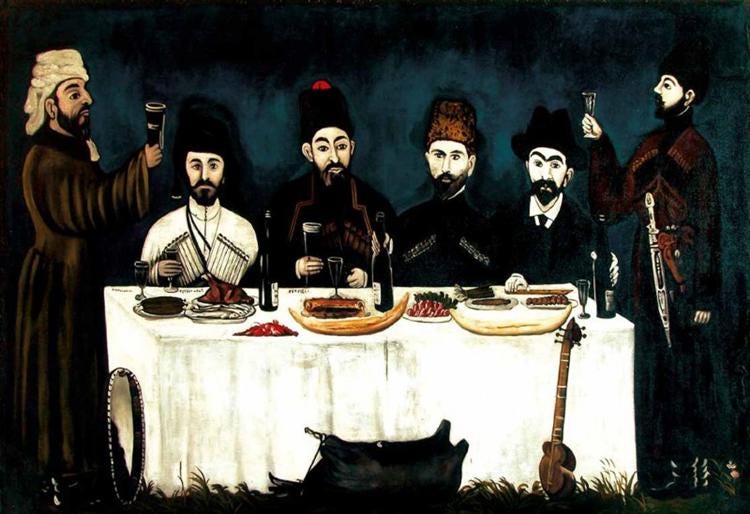Theory & History
The First Decision
The feast of Kupreishvili family by Niko Pirosmani, Georgia circa 1900
The First Decision
To claim that prehistoric societies were ‘governed’ one must be able to demonstrate high probability that a significant proportion of decisions were made as a group. The way into this topic is to identify decisions which were made routinely, and estimate the extent to which these decisions may have been individualised (by one or a pair), or cooperative (grouped as a whole), or directed (stratified). Broadly the decisions may be separated into subsistence-related actions and actions for maintaining social order.
In the relevant anthropological literature the most commonly mentioned decision is whether, when, and where to move camp. Like so many other prehistoric decisions, transferring a group to different location could be the result of considerations of both subsistence and social order simultaneously. It might have been a move to different foraging grounds because of seasonal fluctuations or deple…


